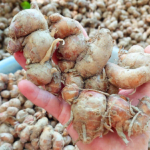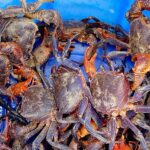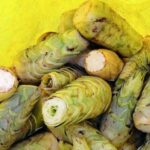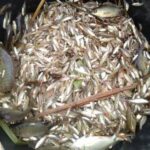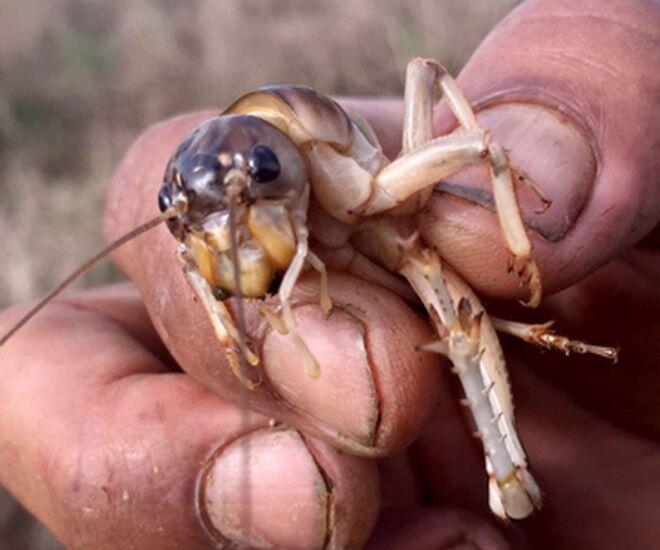
Once despised, the mole cricket has emerged as a delicacy and a precious medicine, commanding a premium price.
Mole crickets, known scientifically as Gryllotalpidae, are thick-bodied insects with impressive biological features. They are characterized by their armored heads, long antennae measuring 3-5 cm, and round eyes. What sets them apart are their enlarged forelimbs, resembling small shovels, which enable them to efficiently dig tunnels and navigate underground.
However, with advancements in culinary arts and medicine, these once-shunned insects have undergone a remarkable transformation. They are now prized as a delicacy by gourmets and valued as a rare medicinal ingredient.
Mole crickets, also known as ‘earth-boring crickets’, possess remarkable adaptability. They are one of the few insect species capable of swimming, flying, and moving swiftly on land. During their breeding season, adult mole crickets can fly up to 8 kilometers in search of mates. This ability has earned them the poetic name “Hai Kong Lu” (sea, sky, and land) in Chinese, or the more colloquial nickname “earth dog.”
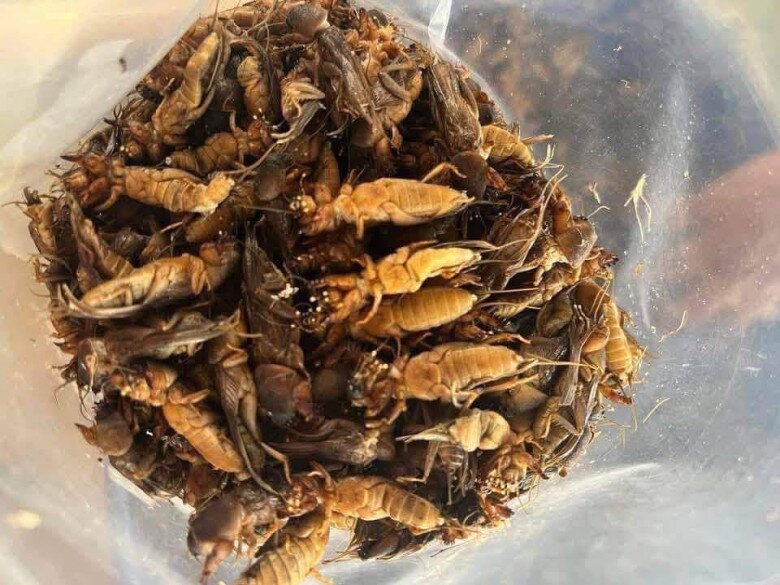
Mole crickets are found in scattered populations across continents, excluding Antarctica. They are primarily nocturnal, spending most of their time hidden within intricate underground tunnel systems. With the arrival of winter, they enter a state of hibernation, awaiting the return of warmer weather. Omnivorous in nature, their diet includes larvae, worms, roots, and grass, which partly explains their reputation as pests among farmers.
As consumers increasingly seek natural and nutrient-rich food sources, particularly from insects, mole crickets have experienced a renaissance of sorts. Research has revealed that they are a good source of nutrition, containing various trace elements beneficial to human health.
In Vietnam, mole crickets have gained a dedicated following among discerning diners for their unique flavor profile—a combination of nuttiness and richness. One of their most celebrated preparations is a specialty of the Northwest region: mole crickets fried with lime leaves. This dish delivers a crisp exterior and a juicy interior, showcasing the versatility of mole crickets, which can also be prepared in a variety of ways, including stir-frying, skewering, and pan-frying.
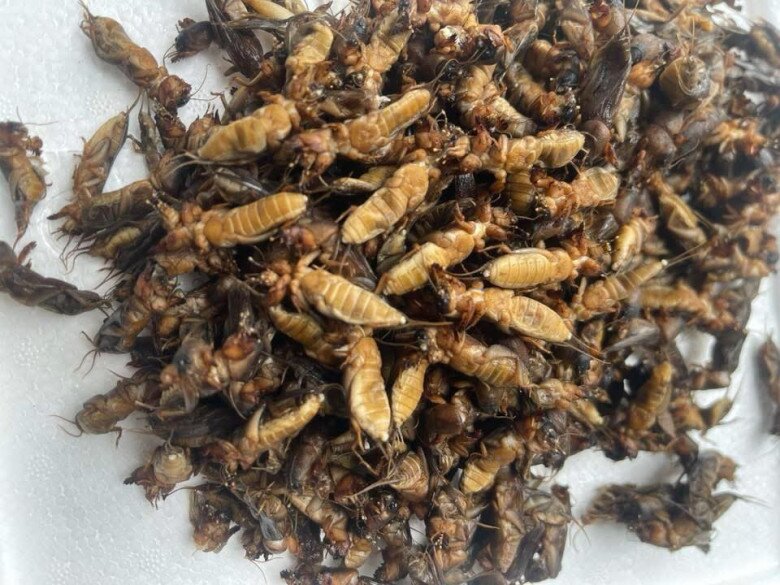
Mole crickets are not just a delicacy in Vietnam; they are also a common ingredient in the cuisines of other countries. In China, they are prepared in similar ways and widely enjoyed. In the Philippines, a popular dish called ‘Kamaru’ is made from mole crickets harvested from rice fields during the harvest season. Kamaru is typically cooked adobo-style (marinated in vinegar, crushed garlic, and soy sauce) or fried, and served with tomatoes for a protein- and vitamin B-rich meal.
The economic value of mole crickets is significant. In Vietnam, their price ranges from 300,000 to 500,000 VND per kilogram, depending on the season. In the massive Chinese market, dried mole crickets command an even higher price, reaching 280 CNY per kilogram (approximately 1 million VND per kilogram), reflecting the strong demand for this delicacy.
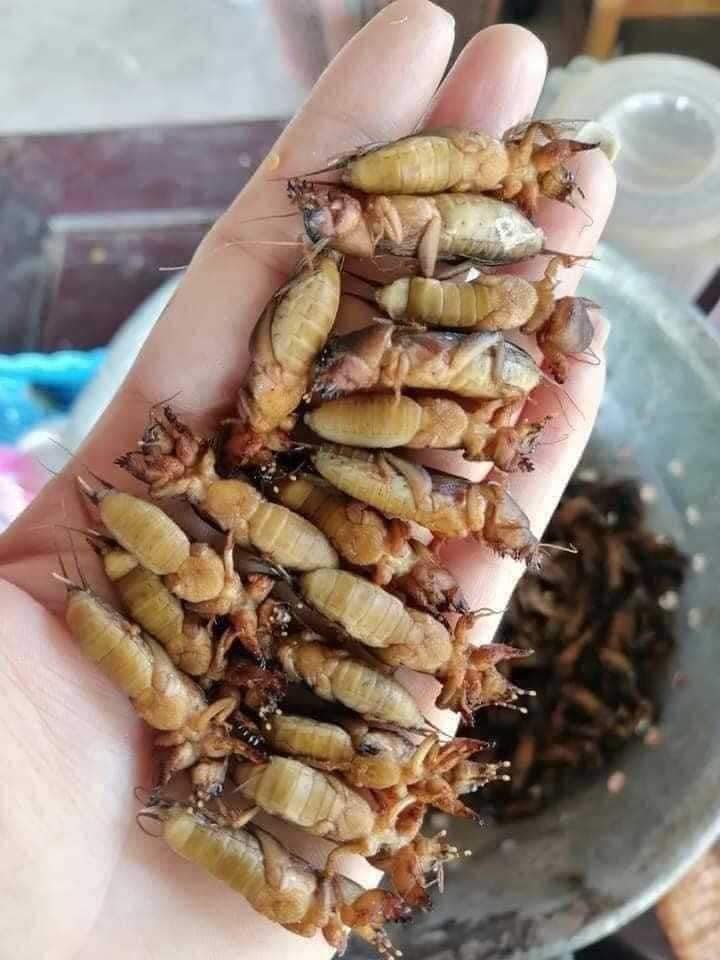
Beyond their culinary appeal, mole crickets are also prized in traditional Asian medicine. In China, they have long been utilized as a rare medicinal ingredient with diuretic, anti-edema, detoxifying, and moisture-absorbing properties. They can be ground into a powder and consumed as a health supplement.
In Vietnam, mole crickets hold a place in folk medicine as well. Traditional practitioners typically catch them in August and September, clean them, and then dip them in boiling water or alcohol. The wings, antennae, legs, and tails are removed, and the insects are then sun-dried or oven-dried for medicinal use. According to folk wisdom, mole crickets have a salty taste, a cold nature, and are non-toxic. They are believed to possess diuretic properties and are used to treat abdominal distension.
In summary, the mole cricket has undergone a remarkable transformation, from a despised pest to a valuable delicacy and medicine. This change in perception and discovery has turned mole crickets into a new economic resource, providing high value to local communities. It also highlights the potential for exploring and harnessing sustainable food sources from the insect ecosystem.
The Ultimate Superfood Hiding in the Mountains of Northwest Vietnam: A Ginger-like Root with Medicinal Properties and Culinary Versatility.
With a pungent ginger-like spice and the aromatic flavor of galangal, this unique blend of spices creates a distinctive taste – a quintessential dipping sauce for boiled chicken and other culinary delights. This root vegetable has become an indispensable spice in the mountainous northern region of Vietnam, elevating every meal with its magical touch.
The Unlikely Delicacy: A Tasty Treat from the Heart of the Mekong Delta
Once considered a post-harvest waste product, the humble waterlily bulb has now become a renowned delicacy, synonymous with the unique and exquisite flavors of the Mekong Delta. This humble root vegetable has captivated the palates of discerning diners far and wide, showcasing the essence of Western Vietnam’s culinary delights.


























